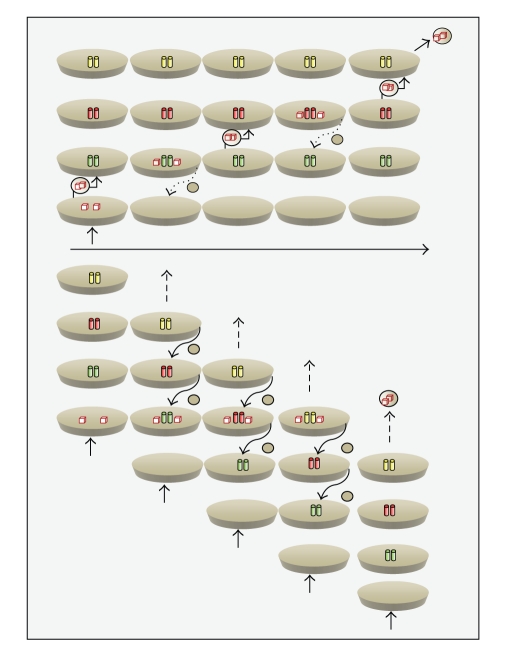Figure 1.
The vesicular transport model (top) versus the cisternal maturation model (bottom). In the vesicular transport model, cargo (red boxes) is transferred between stable Golgi compartments (coloured barrels) via vesicle carriers (circles with boxes) until it exits the Golgi (top right). Some proteins (e.g., SNAREs) and/or lipids could be returned via retrograde trafficking (curved downward-pointing arrows, unfilled circles). In the cisternal maturation model, the cargo can be considered to be stably located within a membrane compartment that changes identity via the retrograde trafficking (curved downward-pointing arrows, unfilled circles) of Golgi identity determinants (coloured barrels). As cargo leaves the Golgi in membrane carriers, the trans-Golgi is “consumed” (dashed vertical arrows) while new cisternae are forming by input from the ER (solid vertical arrows). Retrograde transport has a much greater role in maintaining an apparently stable system in the case of cisternal maturation. Under steady state conditions, both situations would appear to be the same. Large horizontal arrow: time of transport.

